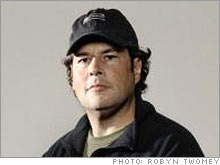|
Force for change From the start at my company, salesforce.com, philanthropy was woven into the DNA. Here's how.
(Fortune Magazine) -- At the time I realized that American companies weren't doing enough for their communities, I was spending about $100 million on corporate philanthropic programs. It was 1997, and I was an executive at Oracle (Charts) when Larry Ellison tapped me to start the company's first major philanthropic initiative. We donated thousands of computers to underserved schools, but our small team felt like the effort fell short of leveraging Oracle's full philanthropic potential. Initially I had been pumped up, but ultimately I was let down.
I realized that philanthropy was about more than writing a check; if we had been able to draw on Oracle's full assets - its employees, its customers, its partners - we could have made a much bigger contribution. That was a defining moment that helped inspire my belief in "integrated philanthropy." To be truly successful, corporate philanthropic programs must be woven into the fabric of the organization. The easiest way to do that? Start from the beginning. Shortly after we started Salesforce.com (Charts) in 1999, we launched the Salesforce Foundation with 1% of the company's stock. As chief executive, I made a commitment to donate 1% of company profits to the community (through product donations) and 1% of employee working hours to community service. The 1-1-1 model - equity, profits, and employee time - ensured that as our business grew, so would our contribution to the community. By leveraging the energy of our entire ecosystem, we have been able to make contributions that have exceeded expectations. To be sure, a great deal can be achieved through product donations. More than 1,000 nonprofits - including United Way, the Red Cross, and the Elizabeth Glaser Pediatric AIDS Foundation - use us to manage their nonprofit programs. But the biggest contributor is our workforce. About 85% of Salesforce.com's employees are active in philanthropy; our success would not be possible without their desire to contribute and their generous spirit. People are here to do more than just make money - they want to make the world a better place. Every year, corporate philanthropic foundations pour billions into their work. Often these efforts occur in isolation, with little relationship to their community, employees, or corporate missions. However, many companies are beginning to see the potential of our integrated approach. Google (Charts) followed Salesforce.com's lead and put 1% of its equity aside. If embraced by others, this could lead to what Fortune's David Kirkpatrick called "the end of philanthropy" and prove the power of the integrated model. Building Salesforce.com from a startup with a big dream to a successful public company has been one of the most exciting experiences of my life. Building the foundation from an idea to a reality has been one of the most rewarding. Adapted from The Business of the Changing World: Twenty Great Leaders on Strategic Corporate Philanthropy, by Marc Benioff and Carlye Adler. |
|

